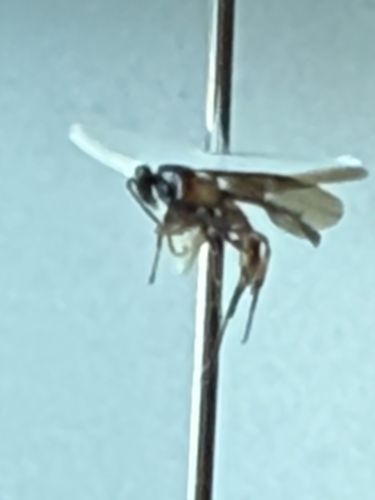Ichneumon Wasp
Scientific Name: Ichneumonidae (various genera and species)
Order & Family: Order: Hymenoptera, Family: Ichneumonidae
Size: 3 mm to 130 mm (including ovipositor in some species); most commonly 10-30 mm.

Natural Habitat
Found in a wide range of habitats globally, including forests, grasslands, agricultural fields, gardens, and urban areas, wherever their host insects are present.
Diet & Feeding
Adult Ichneumon wasps typically feed on nectar, honeydew, and sometimes host fluids. The larvae are parasitoids, feeding on and developing within or on other insects (e.g., caterpillars, beetle larvae, cocoons, pupae) or spiders, eventually killing the host.
Behavior Patterns
Ichneumon wasps are solitary insects. Females use a long ovipositor to lay eggs on or in a host. The larvae develop endoparasitically (inside a host) or ectoparasitically (outside a host), consuming the host. Most species are non-stinging to humans, though some larger species may prick if mishandled. They are often seen searching for hosts.
Risks & Benefits
Generally beneficial to humans as biological control agents, helping to regulate populations of many pest insects. They pose virtually no risk to humans as they do not sting defensively like social wasps; their 'stinger' is an ovipositor used for egg-laying and is not venomous for defense.
Identified on: 11/6/2025